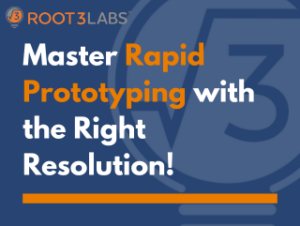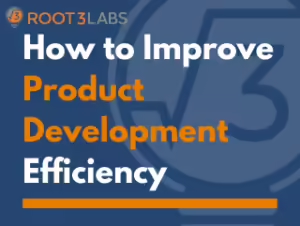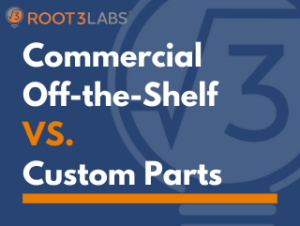Das 'Gut-Schnell-Billig'-Dreieck: Wie man bei der Produktentwicklungsplanung gewinnt
Kennst du den Spruch: "Du kannst etwas gut, schnell oder billig haben. Wählen Sie zwei."? Das ist ein bekanntes Konzept in der Produktentwicklung, das oft als Dreieck dargestellt wird. Die Ressourcen sind endlich, und es herrscht ein ständiges Spannungsfeld zwischen Qualität, Geschwindigkeit und Kosten. Wir erforschen dieses geheimnisvolle Dreieck und finden heraus, wie Sie diese "Regeln" zu Ihrem Vorteil nutzen und Ihren Weg zu einem erfolgreichen Produkt planen können.
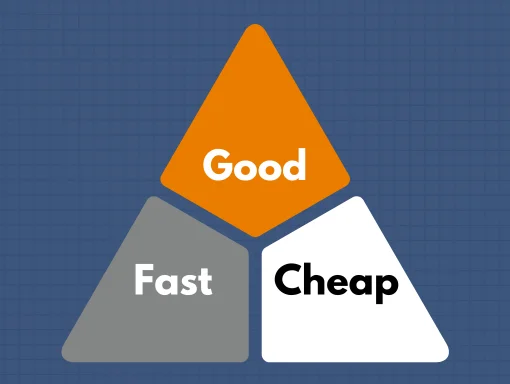
Kann man wirklich alles haben?
Wir alle kennen das: der drohende Abgabetermin, das hektische Gedränge, um einen Meilenstein zu erreichen oder einen Prototyp fertig zu stellen. Ein überstürzter Auftrag führt oft zu verpassten Details, Verzögerungen und letztlich zu höheren Kosten! Stellen Sie sich vor, ein entscheidendes Maß auf einer Bearbeitungszeichnung wird von einem gehetzten Ingenieur übersehen - der "schnelle" Auftrag wird schnell hinfällig, und Sie erhalten etwas, das weder gut, noch schnell, noch billig ist.
Hier bei Root3 Labs glauben wir an die Macht der Produktentwicklungsplanung. Indem wir die kritischen Elemente der Zeitachse (den "kritischen Pfad") genau im Auge behalten, können wir unseren Zeitplan verbessern, die Gesamtkosten senken und das beste Qualitätsprodukt schaffen. Das ist gut, schnell, und billig!
Planen Sie Ihren Weg zu Gut Schnell Günstig
Wie können wir also die widersprüchlichen Anforderungen des Dreiecks "gut, schnell, billig" bewältigen? Hier sind einige der Gedanken und besten Tipps des Teams:
Machen Sie sich den iterativen Prozess zu eigen:
- Conrad, unser Direktor für TechnikEr betonte die Bedeutung der Iteration, um zu einem Prototyp zu gelangen, der das gesamte Dreieck darstellt. "Ich glaube nicht, dass ich mit diesem Konzept in vollem Umfang einverstanden bin", sagte er mir.Ich denke, die meisten Produkte letztendlich alle 3 Ziele erreichen, und das ist es, was sie erfolgreich macht. Dies wird jedoch erst nach vielen Iterationen erreicht, die PrototypenDas ist der Punkt, an dem dies am ehesten zutrifft."
Setzen Sie rücksichtslos Prioritäten:
- Als wir fragten Brian, einer unserer MaschinenbauingenieureEr sprach darüber, dass das "Gute" die Grundlage für Ihr Projekt sein sollte. "A Ein Produkt, das billig und schnell, aber nicht gut ist, ist, nun ja, nicht gut. Man muss zuerst entwerfen für Gut Wenn Sie dann ein gutes Produkt haben, können Sie es im Hinblick auf geringere Kosten, höhere Geschwindigkeit und andere Kriterien (Zuverlässigkeit, Langlebigkeit, Herstellbarkeit, Benutzer-Feedback, erweiterte Funktionen usw.) optimieren. Sie müssen nicht immer mit Großartig, aber mit dem Ziel, zu verfehlen Gut ist ein Rezept für spätere Kopfschmerzen."
Planen Sie für die Langstrecke:
- Erinnern Sie sich an den uralten Ratschlag: "Ihr Mangel an Planung rechtfertigt nicht meinen Notfall". Wenn Sie sich die Zeit nehmen, Ihren Entwicklungsfahrplan im Voraus zu planen, können Sie sich im Nachhinein Kopfschmerzen (und mehr Ressourcen) sparen. Ermitteln Sie Ihre kritischen Meilensteine, potenzielle Hindernisse und Abhängigkeiten zwischen Aufgaben.
Die Macht des "Gut Genug":
- Das Streben nach Perfektion in der Anfangsphase kann leicht zur Falle werden! In der frühen Entwicklungsphase reicht ein "guter" Prototyp aus, um Ihr Kernkonzept zu validieren. So können Sie wertvolles Nutzerfeedback sammeln und Ihr Design effizient verfeinern.
Sie fragen sich, wie Sie IHR Produkt bekommen können?
Entwicklungsprozess richtig?
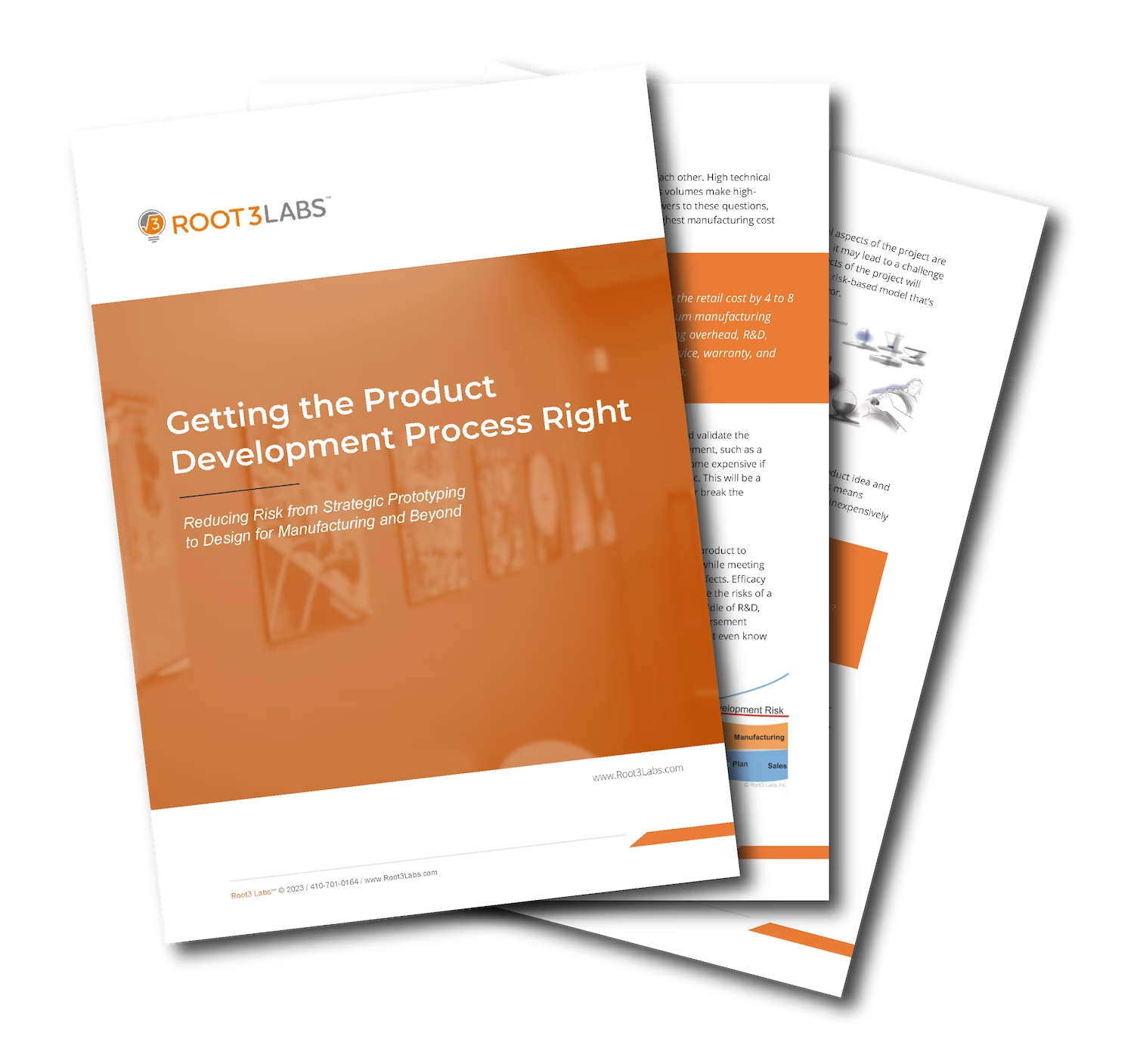
Jenseits des Dreiecks
Denken Sie daran, dass "gut" zwar anfangs im Mittelpunkt stehen mag, aber verlieren Sie die beiden anderen Ecken des Dreiecks nicht aus den Augen. Wenn sich Ihr Produkt weiterentwickelt, können Sie es kontinuierlich in Richtung Geschwindigkeit und Kosten verbessern, ohne die Qualität zu beeinträchtigen. Das Streben nach "großartig" ist zwar immer bewundernswert, aber der Schlüssel ist, sich niemals mit weniger als "gut" zufrieden zu geben. Wenn Sie die Entwicklung überstürzen, um eine willkürliche Frist für ein Produkt einzuhalten, das letztendlich nicht ausreicht, kann dies zu langfristigen Problemen führen.
Man muss nicht immer mit der Perfektion beginnen, aber das Ziel, "gut" zu verfehlen, indem man sich auf "schnell" oder "billig" konzentriert, ist ein Rezept für ein Desaster.
Indem wir der Planung Priorität einräumen, Iterationen zulassen und uns auf die Kernqualität konzentrieren, können wir uns von den Beschränkungen des Dreiecks "gut, schnell, billig" befreien.


